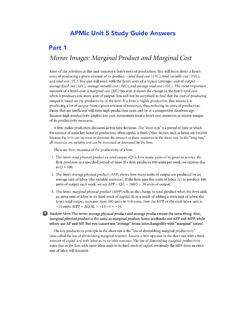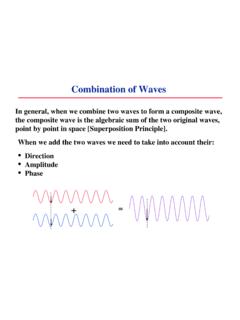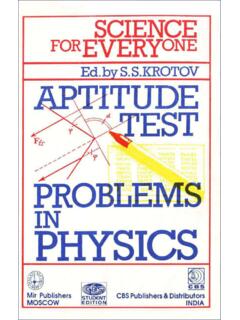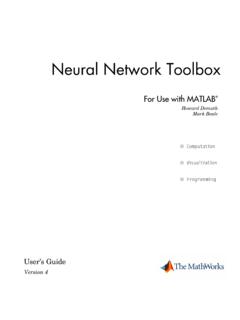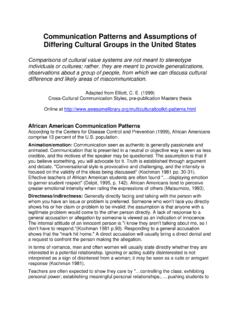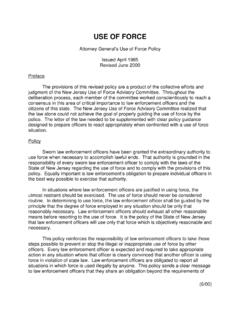Transcription of Mathematical Olympiad in China : Problems and Solutions
1 Mathematical Blympiad in China Problems and Solutions This page intentionally left blank Mathematical Olympiad in China Problems and Solutions Editors Xiong Bin East China Normal University, China Lee Peng Yee Nanyang Technological University, Singapore East China Normal University Press World Scientific Editors XIONG Bin East China ~ o r m a lUniversity, China LEE Peng Yee Nanpng Technological University, Singapore Original Authors MO Chinese National Coaches Team of 2003 - 2006. English Translators XIONG Bin East China N O ~ T T UUniversity, Z~ China FENG Zhigang shanghai High School, China MA Guoxuan h s t China Normal University, China LIN Lei East China ~ormalUniversity, China WANG Shanping East China Normal university, China Z m N G Zhongyi High School Affiliated to Fudan University, China HA0 Lili Shanghai @baa Senior High School, China WEE Khangping Nanpng Technological University, singupore Copy Editors NI Ming m t China N O ~ University Z press, China Z M G Ji World Scientific Publishing GI.
2 , Singapore xu Jin h s t China Normal Universitypress, China V. This page intentionally left blank Preface The first time China sent a team to IMO was in 1985. At that time, two students were sent to take part in the 26th IMO. Since 1986, China has always sent a team of 6 students to IMO except in 1998 when it was held in %wan. So far (up to 2006) , China has achieved the number one ranking in team effort for 13 times. A great majority of students have received gold medals. The fact that China achieved such encouraging result is due to, on one hand, Chinese students' hard working and perseverance, and on the other hand, the effort of teachers in schools and the training offered by national coaches. As we believe, it is also a result of the educational system in China , in particular, the emphasis on training of basic skills in science education.
3 The materials of this book come from a series of four books (in Chinese) on Forurzrd to IMO: a collection of Mathematical Olympiad Problems (2003 - 2006). It is a collection of Problems and Solutions of the major Mathematical competitions in China , which provides a glimpse on how the China national team is selected and formed. First, it is the China Mathematical Competition, a national event, which is held on the second Sunday of October every year. Through the competition, about 120. students are selected to join the China Mathematical Olympiad (commonly known as the Winter Camp) , or in short CMO, in January of the second year. CMO lasts for five days. Both the type and the difficulty of the Problems match those of IMO. Similarly, they solve three Problems every day in four and half hours. From CMO, about 20 to 30 students are selected to form a national training team.
4 The training lasts for two weeks in March every year. After six to eight tests, plus two qualifying vii viii Mathematical Olympiad in China examinations, six students are finally selected to form the national team, to take part in IMO in July that year. Because of the differences in education, culture and economy of West China in comparison with East China , Mathematical competitions in the west did not develop as fast as in the east. In order to promote the activity of Mathematical competition there, China Mathematical Olympiad Committee conducted the China Western Mathematical Olympiad from 2001. The top two winners will be admitted to the national training team. Through the China Western Mathematical Olympiad , there have been two students who entered the national team and received Gold Medals at IMO. Since 1986, the China team has never had a female student.
5 In order to encourage more female students to participate in the Mathematical competition, starting from 2002, China Mathematical Olympiad Committee conducted the China Girls' Mathematical Olympiad . Again, the top two winners will be admitted directly into the national training team. The authors of this book are coaches of the China national team. They are Xiong Bin, Li Shenghong, Chen Yonggao , Leng Gangsong, Wang Jianwei, Li Weigu, Zhu Huawei, Feng Zhigang, Wang Haiming, Xu Wenbin, Tao Pingshen, and Zheng Chongyi. Those who took part in the translation work are Xiong Bin, Feng Zhigang, Ma Guoxuan, Lin Lei, Wang Shanping, Zheng Chongyi, and Hao Lili. We are grateful to Qiu Zhonghu, Wang Jie, Wu Jianping, and Pan Chengbiao for their guidance and assistance to authors. We are grateful to Ni Ming and Xu Jin of East China Normal University Press.
6 Their effort has helped make our job easier. We are also grateful to Zhang Ji of World Scientific Publishing for her hard work leading to the final publication of the book. Authors March 2007. Introduction Early days The International Mathematical Olympiad (IMO) , founded in 1959, is one of the most competitive and highly intellectual activities in the world for high school students. Even before IMO, there were already many countries which had mathematics competition. They were mainly the countries in Eastern Europe and in Asia. In addition to the popularization of mathematics and the convergence in educational systems among different countries, the success of Mathematical competitions at the national level provided a foundation for the setting-up of IMO. The countries that asserted great influence are Hungary, the former Soviet Union and the United States.
7 Here is a brief review of the IMO and Mathematical competition in China . In 1894, the Department of Education in Hungary passed a motion and decided to conduct a Mathematical competition for the secondary schools. The well-known scientist, 1. volt Etovos , was the Minister of Education at that time. His support in the event had made it a success and thus it was well publicized. In addition, the success of his son, R . volt Etovos , who was also a physicist , in proving the principle of equivalence of the general theory of relativity by A . Einstein through experiment, had brought Hungary to the world stage in science. Thereafter, the prize for mathematics competition in Hungary was named Etovos prize . This was the first formally organized Mathematical competition in the world. In what follows, X Mathematical Olympiad in China Hungary had indeed produced a lot of well-known scientists including L.
8 Fejer, G. Szego, T . Rado, A . Haar and M . Riesz (in real analysis), D. Konig ( in combinatorics) , T. von Kdrmdn ( in aerodynamics) , and 1. C. Harsanyi (in game theory, who had also won the Nobel Prize for Economics in 1994). They all were the winners of Hungary Mathematical competition. The top scientific genius of Hungary, 1. von Neumann, was one of the leading mathematicians in the 20th century. Neumann was overseas while the competition took place. Later he did it himself and it took him half an hour to complete. Another mathematician worth mentioning is the highly productive number theorist P. Erdos. He was a pupil of Fejer and also a winner of the Wolf Prize. Erdos was very passionate about Mathematical competition and setting competition questions. His contribution to discrete mathematics was unique and greatly significant.
9 The rapid progress and development of discrete mathematics over the subsequent decades had indirectly influenced the types of questions set in IMO. An internationally recognized prize named after Erdos was to honour those who had contributed to the education of Mathematical competition. Professor Qiu Zonghu from China had won the prize in 1993. In 1934, B. Delone, a famous mathematician, conducted a Mathematical competition for high school students in Leningrad (now St. Petersburg). In 1935, Moscow also started organizing such event. Other than being interrupted during the World War II , these events had been carried on until today. As for the Russian Mathematical Competition ( later renamed as the Soviet Mathematical Competition) , it was not started until 1961. Thus, the former Soviet Union and Russia became the leading powers of Mathematical Olympiad .
10 A lot of grandmasters in mathematics including A . N. Kolmogorov were all very enthusiastic about the Mathematical competition. They would personally involve in setting the questions for the competition. The former Soviet Union even called it the Mathematical Olympiad , believing that mathematics is the Introduction xi gymnastics of thinking . These points of view gave a great impact on the educational community. The winner of the Fields Medal in 1998, M. Kontsevich, was once the first runner-up of the Russian Mathematical Competition. G . Kasparov , the international chess grandmaster, was once the second runner-up. Grigori Perelman , the winner of the Fields Medal in 2006, who solved the Poincare's Conjecture, was a gold medalist of IMO in 1982. In the United States of America, due to the active promotion by the renowned mathematician Birkhoff and his son, together with G.


